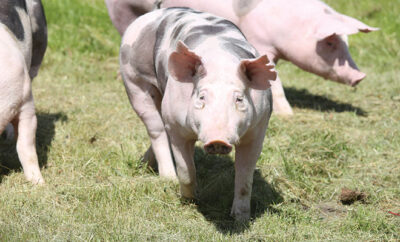
Food Allergy Awareness and Education
“Mom, I wanna be able to eat all the foods…all the foods I want. I don’t want the food allergies anymore.”
~Chop Foster, age five
Food Allergy Research & Education, or FARE, reports that food allergies have increased by 50 percent within the last ten years and are on the rise. Approximately 15 million Americans, 6 million of those children, have been diagnosed with food allergies. Additionally, every year nearly 200,000 Americans receive emergency treatment due to food allergies. Adults who develop new food allergies tend to have them lifelong, whereas children are likely to outgrow them over time.
Symptoms of food allergies include, but are not limited to, sneezing; coughing; runny nose; itching or tingling; wheezing or shortness of breath; tightening of the chest or throat; vomiting; stomach pain; runny stool; swelling of the mouth, face, lips, tongue, throat or extremities. A severe symptom is anaphylaxis, which causes the immune system to release a flood of chemicals that can cause you to go into shock; your blood pressure drops suddenly and your airways narrow, blocking breathing. Symptoms include a rapid, weak pulse; a skin rash; and nausea and vomiting.
Chop’s mom, Tanisha Foster, described his first encounter with food allergies. “Shortly after we transitioned Chop to solids as a baby, I arranged a playdate with a friend at Chick-Fil-A. After settling in, she asked if she could get him ice cream to try. After just one lick, his face quickly started swelling, blistering, and his cheeks turned red. We dashed for the drug store and popped a bottle of Benadryl open right on the aisle. After our allergist conducted a skin test, we discovered he had an extensive list of food allergies: dairy, soy, wheat, eggs, peanuts, tree nuts, seafood and sesame, the top eight, along with several others.”
Tanisha’s background helped her deal with the issues the family encountered. She earned a bachelor of science in biology, pre-med, from the University of Alabama, Birmingham, and a master’s in health studies with a focus on health education and promotion from the University of Alabama. The first task was to begin education for Chop. “From the time of his diagnosis, we began to speak to him about his allergies,” she said. “Of course, being so young, he could not fully understand the magnitude of what things meant, but we spoke openly about them. Whenever we ate in restaurants, we asked the chef or manager many questions and Chop always listened intently, knowing the conversations were about him. We discussed the importance of asking his parents’ permission before taking food from others. Whenever we gave food, we would make a practice of reading labels in front of him and point out, ‘Oh, Chop, this does not have your allergens so you can have it!’
“He started asking, ‘What does CF mean?’ whenever we wrote it on food containers or bags. We would explain that it was food that was safe for him. Even now, he asks, ‘Is that Chop Friendly?’ When meeting new friends, and they offer to share, he mentions that he has food allergies and has to get his parents’ or the adult in charge’s permission. We always affirm him when making these choices for himself.”
Chop Friendly is also Tanisha’s initiative to educate schools, families and the community on how to safely accommodate and include children with food allergies. She advocates for many families by providing awareness and resources to live a healthy life beyond the scope of limitations with food allergies. Chop Friendly provides research-based curriculums, professional development, one-on-one and group trainings.
Having food allergies can have several social effects on individuals, especially children. There have been numerous reports of food allergy bullying, where individuals who have food allergies are threatened, ridiculed or even teased with or about foods they are allergic to. “Excluding children with allergies during meal times, even when done with the intent to protect them, can create mental stress or feelings of isolation. Schools that emphasize peanut-free zones or a nut-free facility encourage inclusion and safety. Parents and teachers should pay attention to signs of bullying such as isolation, withdrawal in group settings, nervousness, talk of suicide or hopelessness,” Tanisha advised.
One day Chop was exposed to one of his allergens and he instantly knew something was not right. “I moved quickly and explained, ‘We have to use your epi-pen, and it will sting like we talked about. Don’t be afraid, because it will work to make you feel better.’ He braced himself and said, ‘I will be brave.’ I knew that in moments like this, all of our including him in the past conversations was not in vain. He understood. We had prepared him to advocate for himself. We had prepared him to bring awareness to others for himself and others like him.” ■
Sources: foodallergy.org, facebook.com/chopfriendly and chopfriendly.com.







